|
Posted: 3/23/2013 4:26:59 PM EDT
Eugene Stoner went to work as chief engineer in 1954,the AR-5 patent is from 13 jun. 1955,did he had anything to do with its design and development or was it already in development at the time?
"The AR-5 was submitted in response to an Air Force request shortly after the division was established on October 1, 1954." The Eugene Stoner AR-10 system patent is from 14 ago. 1956 and the AR-5 patent is from 13 jun. 1955,my question is,did the simplistic tubular design of the AR-5 structure had some influence on the design of the AR-10? The first AR-10 prototypes,the M-8 X01 and AR-10 X03,used a steel construction with a receiver structure based on a tubular construction like the one used on the AR-5 aluminium receiver and after the AR-10A X03,the next AR-10 used the same simplistic aluminium design construction,up to now,the AR-7 receiver structure was done when the AR-10 was just a idea so there may be a conection... Stoner holding the AR-10 over AR-10 drawings and the AR-5 im pices over the table. 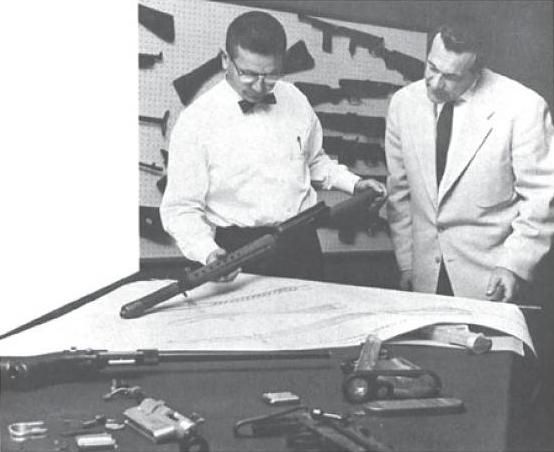
...or Conspiracy!!! 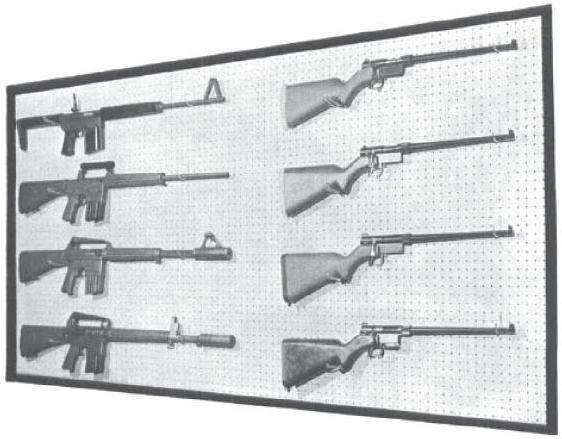
|
|
|
|
As the AR-5,the AR-10 used the cylindrical action layout since its early development stage,it used a simplistic design filosophie where form follows function as this keeps the action simpler the the all structure lighter and cost efectice.
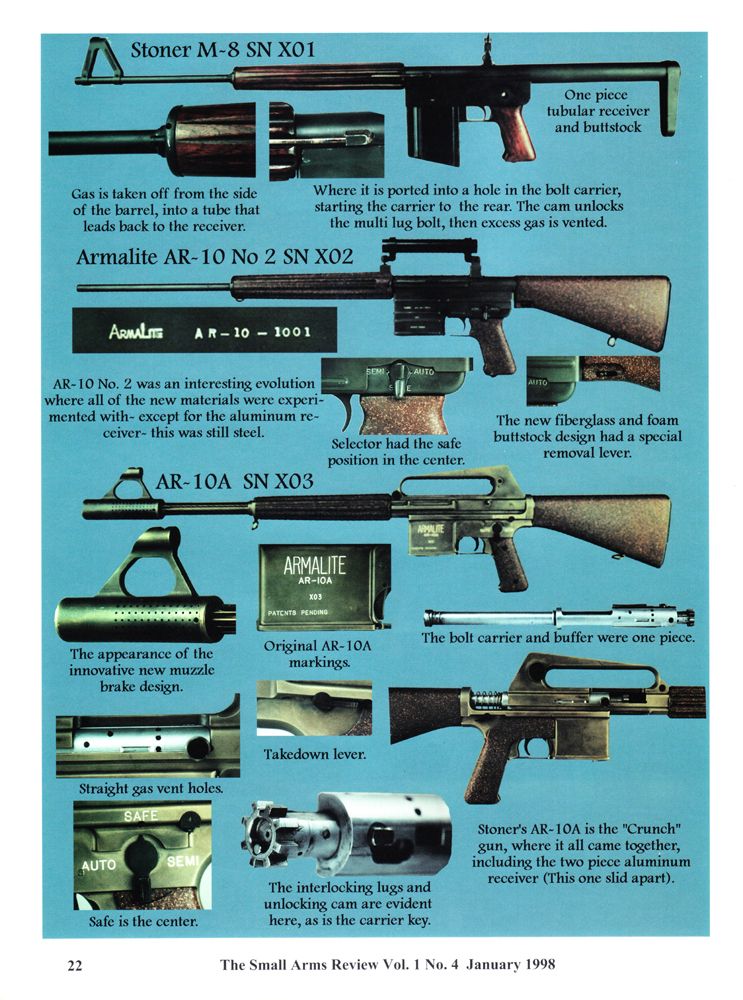
The AR-5 and AR-5 n.2 used a riveted receiver structure as the AR-5A used a one pice aluminium machined structure with a trigger mechenism and guard that was assembled to it. 

"It is the pervading law of all things organic and inorganic, Of all things physical and metaphysical, Of all things human and all things super-human, Of all true manifestations of the head, Of the heart, of the soul, That the life is recognizable in its expression, That form ever follows function. This is the law." |
|
|
|
|
|
|
|
I don't know who would have the answer to that. It certainly seems possible that he had time from 1954 to 1955 to work on the AR-5.
The timeline of early Eugene Stoner projects dating back to 1943 (?!) Wonder where SAR got that info? I always thought Stoner was on active duty in the Marines during WWII, and not a weapons designer at that time. I mean, he appears to be too young to have had such a position in 1943. Live and learn. |
|
|
|
That's a great photo of Gene with the AR-7. I have not seen that one before. I have seen several others which appear to have been taken the same day as that one in which Gene is wearing the same shooting jacket and hat and holding an AR-7. Where did you find the photo Armeiro?
|
|
|
|
Quoted:
That's a great photo of Gene with the AR-7. I have not seen that one before. I have seen several others which appear to have been taken the same day as that one in which Gene is wearing the same shooting jacket and hat and holding an AR-7. Where did you find the photo Armeiro? Jean Huon "THE M16" book. |
|
|
|
|
|
Quoted:
Lest anyone forget that Melvin Johnson worked for ArmaLite as well: http://world.guns.ru/userfiles/images/machine/mg67/johnson_m1941.jpg Yep, per the bolt design the Johnson is the archetype. |
|
|
|
I think that M.Johnson was at ArmaLite as a engineer adviser as during the development of the Ar-10 bolt system mechanics they were trying not to infringe on other existing patents and so they could capitalize with the knowledge from the Johnson automatic weapons and because in 1951Johnson was appointed as weapons consultant to the Secretary of Defense.
"Johnson's patents were used by Armalite on the AR-10, AR-15, and later M16 rifles. Johnson was hired by Armalite as a consultant to promote their rifle incorporating his bolt design." "Johnson's practice was to give all of his weapons a "pet" nickname: M1941 rifle Betsy M1941 light machine gun Emma M1947 auto carbine Daisy Mae" |
|
|
|
GUNS Magazine March 1957
"The toughest job for Sullivans team developing the AR-10 was to designe a new bolt assembly that would not infringe on existing patents and also,where possible,improve on existing designs." |
|
|
|
Quoted: Lest anyone forget that Melvin Johnson worked for ArmaLite as well: http://world.guns.ru/userfiles/images/machine/mg67/johnson_m1941.jpg We shoulda gone with that to replace the BAR during WW2. (Forgive me, St. Browning.) |
|
|
|
If you have an AR-10 perhaps you could throw it in the pool and let us know |
|
|
|
Quoted:
If you have an AR-10 perhaps you could throw it in the pool and let us know  
|
|
|
|
I hope I don't de rail this thread but I've had this .22 Hornet mag for awhile now and had no idea what it fits.
I dug it out after seeing something familier in this thread. Anyone think it might be an early AR-5 mag? http://i576.photobucket.com/albums/ss208/BigRix/null_zpsd7cf3d4b.jpg http://i271.photobucket.com/albums/jj149/halpark/IMG_0007.jpg I think I might have to clean it up a bit after seeing this picture. |
|
|
|
Quoted:
I hope I don't de rail this thread but I've had this .22 Hornet mag for awhile now and had no idea what it fits. I dug it out after seeing something familier in this thread. Anyone think it might be an early AR-5 mag? http://i576.photobucket.com/albums/ss208/BigRix/null_zpsd7cf3d4b.jpg http://i271.photobucket.com/albums/jj149/halpark/IMG_0007.jpg I think I might have to clean it up a bit after seeing this picture. Can you post a photo of the other side of that magazine?Clean it and light that Ronson. There was a set of images of a AR-5 owned by someone in the web and i am goin crazy looking for it,was the AR-5 sold in large numbers to civilians? |
|
|
|
Air Force Magazine, Volume 40,1957
"William G. Key, Assistant to the President, etc., points out that the floating object is a Fairchild Armalite AR-5 survival gun, which weighs 2!i pounds and floats. The girl weighs more than that, hut floats, too. No one seems clear who the ducks ..." Air Force Magazine, Volume 40 Air Force Association 1957 |
|
|
|
"Shortly after Fairchild established the ArmaLite Division, ArmaLite was invited to submit a rifle to the U.S. Air Force as a replacement for the then-standard survival rifle. A few weeks after receiving information as to this requirement, ArmaLite submitted the AR-5, .22 Hornet Survival Rifle for Air Force evaluation. The AR-5 was adopted and designated the MA-1 Survival Rifle.
The initial success with the AR-5 led Fairchild to reverse the strategy of focusing on the commercial market first, then entering the military market. With the adoption of the AR-5 and with a quantity purchase seemingly assured, ArmaLite decided to defer entry into the commercial field until such time as their reputation and financial position were established as a result of military sales. For the next five years all ArmaLite activity was directed to the development of military firearms." "The 1956 success of the later AR-5 caused ArmaLite to shift its attention to military designs." "The mid to late 1950s was a period of intense development at ArmaLite. The engineering staff was especially strong, with Eugene Stoner, James Sullivan, and Robert Fremont present at the same time. The AR-17 12 Gauge Shotgun started development in the mid-1950s. In 1959 ArmaLite developed the AR-7 .22 caliber survival rifle, which exploited some of the features of AR-5. The rifle entered Production for the commercial market. Small numbers were sold to various military forces for use as survival rifles." "AR-5 (1954-55) A bolt-action, .22 Hornet survival rifle adopted by the Air Force in 1956. It weighed a mere 2 ¾ pounds. It distinguishing characteristic was the ability to detach the barrel from the action, and the action from the stock, and place both within the stock. With the buttcap replaced, the rifle would float. The government specification for the MA-1 called for a second, .22 Long Rifle barrel to be attached outside the stock. After adopting the AR-5 as the MA-1, the Air Force failed to follow through with a purchase. The main effect of the AR-5 was to whet ArmaLite’s appetite for government business. It led to development of the AR-7." "AR-7 (1959-60) The AR-7 Explorer was the first commercial item to be put into production by the ArmaLite Division of Fairchild. This rifle is the civilian version of the Air Force adopted AR-5 Survival Rifle." http://archives.gunsandammo.com/content/armalite |
|
|
|
Quoted:
Quoted:
I hope I don't de rail this thread but I've had this .22 Hornet mag for awhile now and had no idea what it fits. I dug it out after seeing something familier in this thread. Anyone think it might be an early AR-5 mag? http://i576.photobucket.com/albums/ss208/BigRix/null_zpsd7cf3d4b.jpg http://i271.photobucket.com/albums/jj149/halpark/IMG_0007.jpg I think I might have to clean it up a bit after seeing this picture. Can you post a photo of the other side of that magazine?Clean it and light that Ronson. There was a set of images of a AR-5 owned by someone in the web and i am goin crazy looking for it,was the AR-5 sold in large numbers to civilians? Here ya go. http://i576.photobucket.com/albums/ss208/BigRix/6ceeb653.jpg |
|
|
|
SAR got the information about Stoner's early projects from Stoner himself. He was active duty during WW2, but he was in Aviation Ordnance. That would have given him downtime and access to tools for tinkering.
I suspect that Stoner really didn't have much to do with the AR-5. Everyone just assumes that since Stoner was the lead engineer that he designed everything; however, ArmaLite already had designs underway before Stoner was hired. |
|
|
|
I will have to look it up, but in a very early 1954 circa American Rifleman, the owner of Armalite wrote a little blurb about the AR5 rifle and its development. His project to date was the AR Parasniper.
Pretty sure the AR5 was George Sullivan's baby. The magazine shown was for the M4 survival rifle, which was standard issue then. They interchange with the earlier AR5's. One of the AR5's that was in Armalite's collection when they liquidated in the 1950s was a AR5 that was missing the magazine spring. Guns & Ammo did a test of the AR5 that Armalite had in the collection in 1971. Most of the AR5's in Reed Knight's collection actually came from Bob Millers collection out of Houston TX in the early 1990's. One of Gen Curtis Lemay's rifles was a H&R M4 rifle with a longer barrel, that he kept in his collection until he passed. It was auctioned off quite a few years ago, but he did not have the AR5 later in life, probably because he could not get a legal barrel for it as he lived in California. |
|
|
|
Actually, I think Sullivan's article on the AR-5 was in the January 1957 edition of "American Rifleman". However, Sullivan did note the influence that the USAF Survival School's Burton Miller and Robert Enewold had on the design. If you remember, Burt Miller had previously designed the M4 Survival Rifle, later supervised the USAF's early testing of the AR-15, and ultimately, became VP of ArmaLite after his retirement from the USAF in 1963.
The M4 Survival Rifle shared its magazine with the Savage M23D rifle. If I remember correctly, the "Guns & Ammo" article on the AR-5 ran in its 1971 Annual. It didn't hurt that Burt Miller was also a regular contributor to the magazine. |
|
|
|
Quoted:
I will have to look it up, but in a very early 1954 circa American Rifleman, the owner of Armalite wrote a little blurb about the AR5 rifle and its development. His project to date was the AR Parasniper. Pretty sure the AR15 was George Sullivan's baby. The magazine shown was for the M4 survival rifle, which was standard issue then. They interchange with the earlier AR5's. One of the AR5's that was in Armalite's collection when they liquidated in the 1950s was a AR5 that was missing the magazine spring. Guns & Ammo did a test of the AR5 that Armalite had in the collection in 1971. Most of the AR5's in Reed Knight's collection actually came from Bob Millers collection out of Houston TX in the early 1990's. One of Gen Curtis Lemay's rifles was a H&R M4 rifle with a longer barrel, that he kept in his collection until he passed. It was auctioned off quite a few years ago, but he did not have the AR5 later in life, probably because he could not get a legal barrel for it as he lived in California. 
It makes sense,take a note at the image,there is a AR-5 assembled and one disassembled and there is also a M4 survival rifle over the table,what probably hapened was that first ArmaLite had only the AR-1 rifle but they took a look at what was needed,for the military,and that could be made easily and a reduced cost,as at the tyme ArmaLite was a independent company and a replacement for the M4 was the cheapest way to get the foot on the door and to get the needed visibility,so to use the magazine from the M4 was sound thinking as it was to use the same ammo so ArmaLite could prove the AR-5 superiority over the M4. "The MA-1 established ArmaLite as a recognized firearms company" Is there a chance of sharing the AR-5 info from American Rifleman and Guns & Ammo? Thank you. Note:the disassembled AR-5 over the table is the AR-5A so the magazines may be the "Ronson Lighter". |
|
|
|
Richard Schley Boutelle firing the AR-5
"Popular Science Mar 1957" http://books.google.pt/books?id=byEDAAAAMBAJ&pg=RA1-PA52&dq=popular+science+survival+rifle&hl=en&sa=X&ei=hPNRUcncJKqM7Aask4HYDQ&ved=0CD0Q6AEwBA#v=onepage&q=popular%20science%20survival%20rifle&f=false The photo was deftly taken in the same day as the of him with the AR-10 
The two photos,and others,are deftly in the "National Air and Space Museum Archives Division,Fairchild Industries, Inc. Collection " "Folder 6 AR-5 Rifle, booklet" National Air and Space Museum Archives Division,Fairchild Industries, Inc. Collection |
|
|
|
Quoted:
You have an excellent memory: Page 298, 1971 Guns & Ammo Annual: "Armalite AR5A" by Harris Bierman. The rifle was loaned by ..."Colonel Burton Miller of Armalite, Costa Mesa, Callifornia." Great article. Can you read what the inscription is on the medallion in the stock? Notice, if you look closely at the relationship of receiver length to barrel length in the previous photos then compare the same ratio with the above photo. The rifle in this article appears to have a 16 inch barrel. |
|
|
|
"Johnson was hired by Armalite as a consultant to promote their rifle incorporating his bolt design.Later, Johnson worked to improve the M1 carbine eventually developing the 5.7mm Spitfire cartridge in 1963 and starting Johnson Arms, Inc. The M1 Carbine can be converted to use 5.7mm Spitfire by replacing the barrel with modification of the feed ramp.
Did the time that Johnson worked at ArmaLite,at the same time of the AR-5 with its .22 Hornet,had anything to do with the work he did with the 5.7mm Spitfire later on? AR-5 .22 Hornet: "Parent case None Bullet diameter .224 in (5.7 mm) Neck diameter .243 in (6.2 mm) Shoulder diameter .276 in (7.0 mm) Base diameter .298 in (7.6 mm) Rim diameter .350 in (8.9 mm) Rim thickness .065 in (1.7 mm) Case length 1.403 in (35.6 mm) Rifling twist 1-14 Primer type small rifle" Johnson 5.7mm Spitfire: "Bullet diameter .224 in (5.7 mm) Neck diameter .253 in (6.4 mm) Shoulder diameter .332 in (8.4 mm) Base diameter .353 in (9.0 mm) Rim diameter .356 in (9.0 mm) Case length 1.29 in (33 mm) Overall length 1.65 in (42 mm) Rifling twist 1:14 Primer type Boxer small rifle" 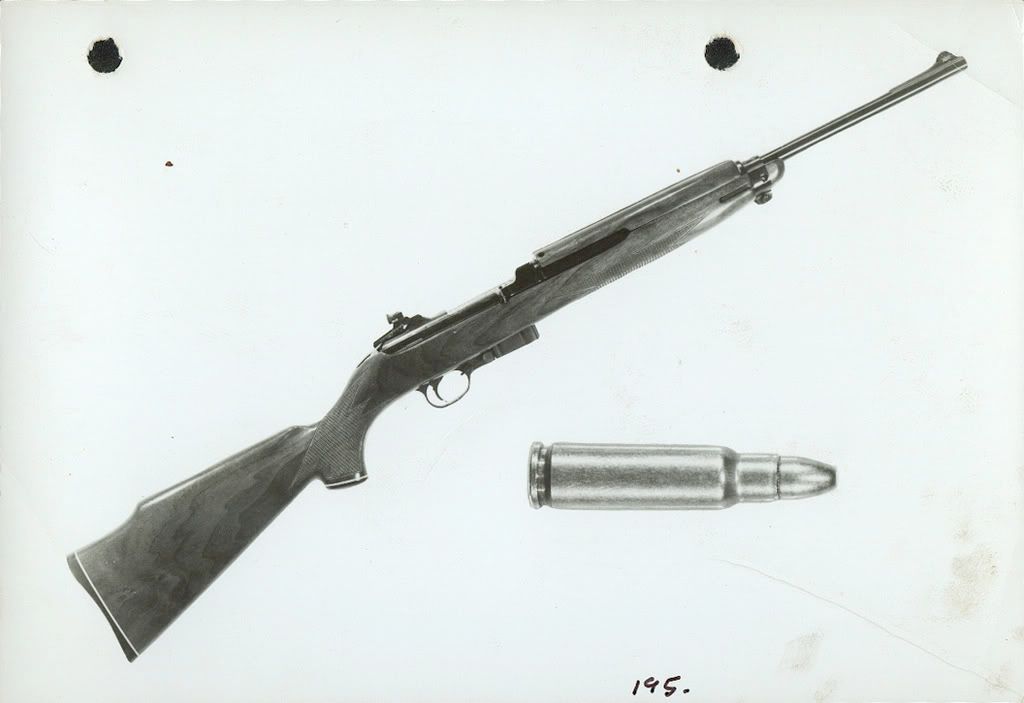
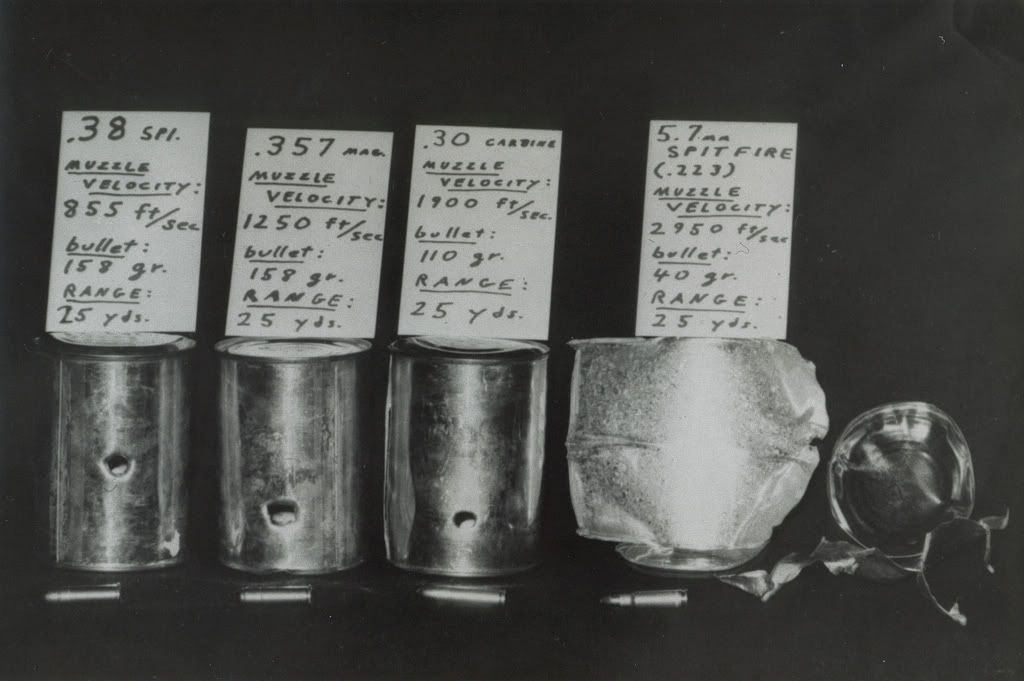
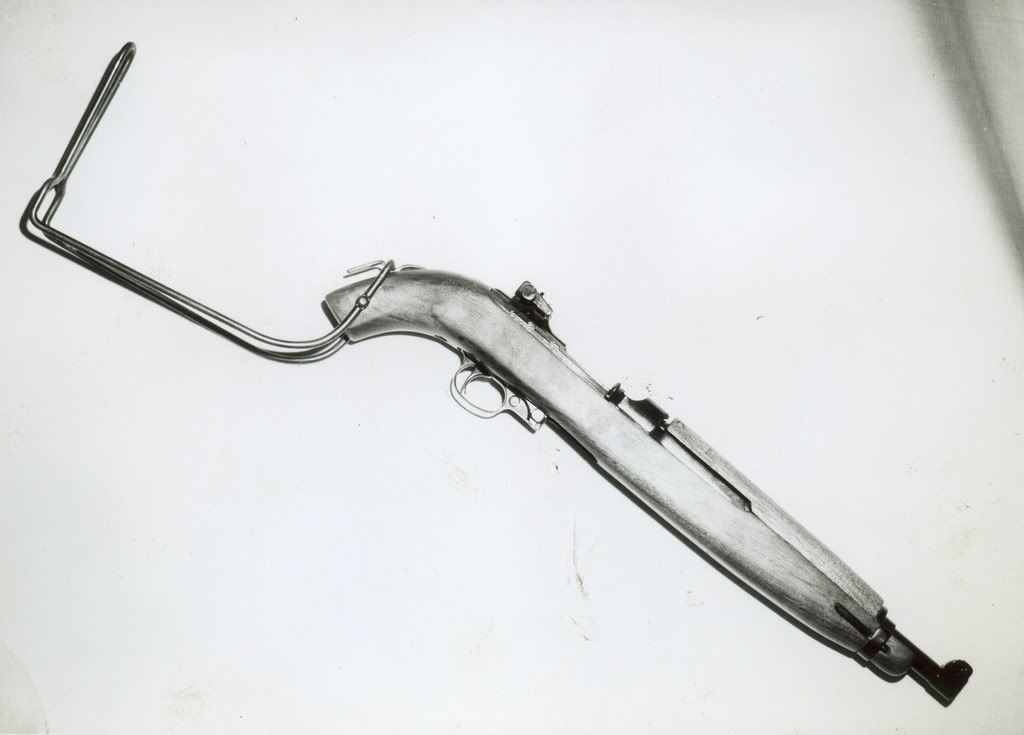
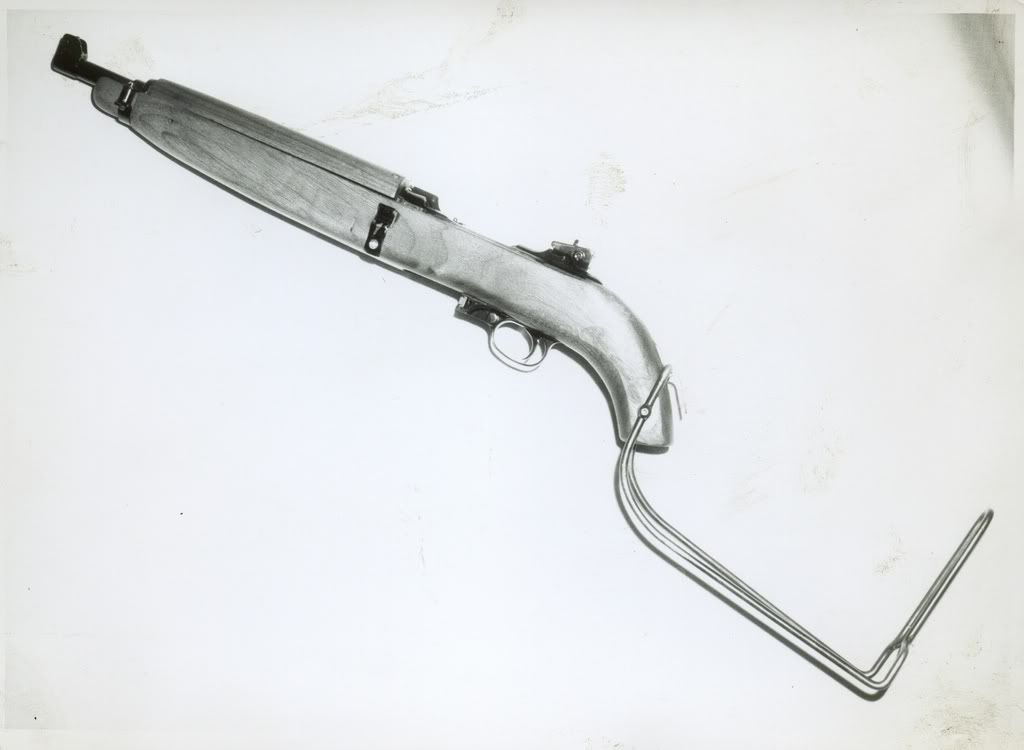
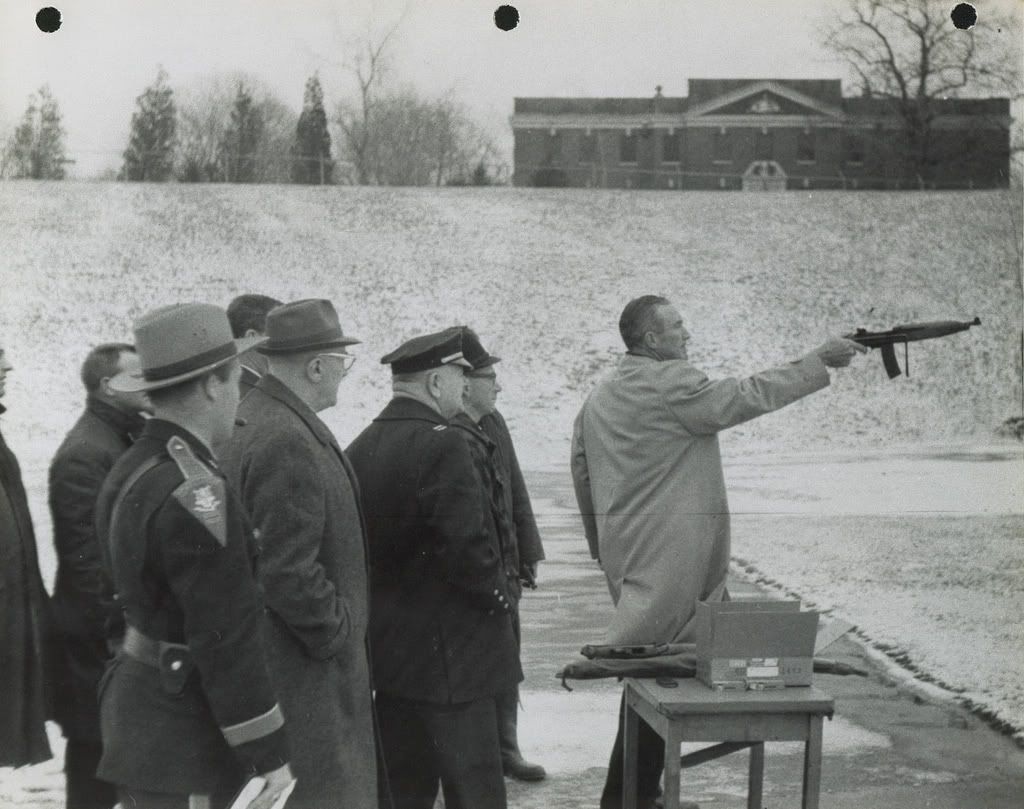
|
|
|
|
Quoted:
"Johnson was hired by Armalite as a consultant to promote their rifle incorporating his bolt design.Later, Johnson worked to improve the M1 carbine eventually developing the 5.7mm Spitfire cartridge in 1963 and starting Johnson Arms, Inc. The M1 Carbine can be converted to use 5.7mm Spitfire by replacing the barrel with modification of the feed ramp. Did the time that Johnson worked at ArmaLite,at the same time of the AR-5 with its .22 Hornet,had anything to do with the work he did with the 5.7mm Spitfire later on? AR-5 .22 Hornet: "Parent case None Bullet diameter .224 in (5.7 mm) Neck diameter .243 in (6.2 mm) Shoulder diameter .276 in (7.0 mm) Base diameter .298 in (7.6 mm) Rim diameter .350 in (8.9 mm) Rim thickness .065 in (1.7 mm) Case length 1.403 in (35.6 mm) Rifling twist 1-14 Primer type small rifle" Johnson 5.7mm Spitfire: "Bullet diameter .224 in (5.7 mm) Neck diameter .253 in (6.4 mm) Shoulder diameter .332 in (8.4 mm) Base diameter .353 in (9.0 mm) Rim diameter .356 in (9.0 mm) Case length 1.29 in (33 mm) Overall length 1.65 in (42 mm) Rifling twist 1:14 Primer type Boxer small rifle" http://i225.photobucket.com/albums/dd297/armeiro1/CARBINE2.jpg http://i225.photobucket.com/albums/dd297/armeiro1/CANS1.jpg http://i225.photobucket.com/albums/dd297/armeiro1/ENFORCERS_EXTENDED.jpg http://i225.photobucket.com/albums/dd297/armeiro1/enforcerextend1.jpg http://i225.photobucket.com/albums/dd297/armeiro1/testfire.jpg The 5.7 Spitfire is a hotter round than the Hornet but Melvin Johnson's work with the Hornet certainly might have had some influence. Plainfield Machine Co. was producing the 5.7s for a time. A used one was sold here a couple of years ago. A good early attempt at producing a PDW on the cheap - literally millions of carbines produced and easily converted. OT: Note from the picture that Melvin Johnson was a big, big man - very tall. One account I've seen mentions that he sometimes wore a huge raccoon skin coat. Melvin Johnson was an outstanding firearm designer. He was a profoundly colorful person as well. The last I heard of him was the time that walked into an office in a full length raccoon coat to sell his latest design of a small cal. carbine. (A modified .30 carbine.) It would have gone head to head with the M-16. http://www.leatherneck.com/forums/archive/index.php/t-24933.html |
|
|
 Win a FREE Membership!
Win a FREE Membership!
Sign up for the ARFCOM weekly newsletter and be entered to win a free ARFCOM membership. One new winner* is announced every week!
You will receive an email every Friday morning featuring the latest chatter from the hottest topics, breaking news surrounding legislation, as well as exclusive deals only available to ARFCOM email subscribers.
AR15.COM is the world's largest firearm community and is a gathering place for firearm enthusiasts of all types.
From hunters and military members, to competition shooters and general firearm enthusiasts, we welcome anyone who values and respects the way of the firearm.
Subscribe to our monthly Newsletter to receive firearm news, product discounts from your favorite Industry Partners, and more.
Copyright © 1996-2024 AR15.COM LLC. All Rights Reserved.
Any use of this content without express written consent is prohibited.
AR15.Com reserves the right to overwrite or replace any affiliate, commercial, or monetizable links, posted by users, with our own.

